WORLD BOOK DAY: What is a book, anyway?
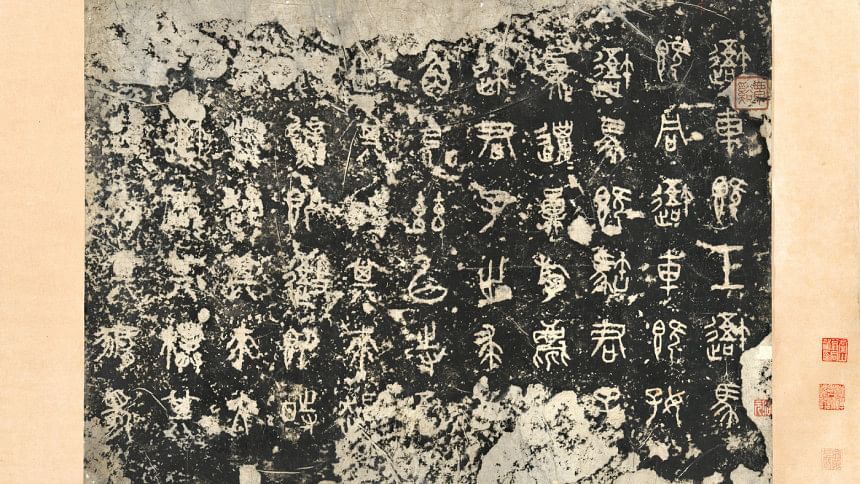
In the Palace Museum of present-day Beijing, 10 stones of about 90 cm height and 60 cm diameter contain some ancient Chinese symbols. Roughly 300 of these characters are decipherable today, but they're the last remaining survivors from some 700 characters that had been inscribed on the drum-shaped boulders, sometime between the 8th and 4th centuries BCE in the beginnings of China's Qin dynasty. Among the earliest surviving Chinese writing forms, these etchings on the 'Stone Drums' are verses that tell stories of hunting and fishing expeditions, of trees, clear water and smooth land, and generous rainfall that would have allowed for a bustling agricultural economy. This technology wasn't the last of its kind. From the Han dynasty that followed and onwards, flattened stone steles (tablets) in China were carved with sacred texts and tales of historic occasions and individual memories. Multiple editions of Confucian classics on stone, canons of Buddhist teachings engraved on sutras, and the carving of Taoist literature on steles all persisted, one after the other, until the year 708 AD, all because stones would outlive other materials like silks, metal, or bamboo. And yet, soon, wood and bamboo tablets did come into use as writing surfaces before the same civilization invented paper; the tablets were inscribed with vertical Chinese characters running across separate pages, held together by thongs—a format whose legacy would result in the codex, what we now know as a 'book'.
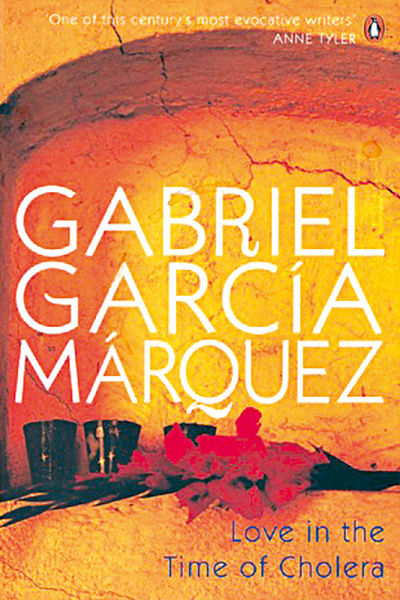
I can guess at the answers I'd get if I were to ask you, what is a book? A collection of bound pages framed by a cover? A PDF or EPUB file on an electronic tablet? A body of text, a story, a narrative? If it's the form that decides the definition, then what about audio books? If it's simply the relaying of a narrative from one person to another, how is a tale passed down by a grandmother different from a book that we listen to on iTunes or Google Play? If it just takes a stamp of recognition from a publisher or an International Standard Book Number (ISBN), what of Homeric classics or, more significantly, divine messages of the Torah, the Bible and the Quran, 'holy' books that long preceded those modern markers?
One solution could be to trace the etymology. The Oxford University Press, in a post on their OUP blog, refer to the Old English/ Germanic form boc or the Gothic boka. Both represent "written and/or illustrated pages bound together for the ease of reading." But paper, the printing press and the codex were relatively modern inventions; Anglo-Saxon documents were made with parchment (animal skin), Chinese and Japanese documents with stones, silks, wood and bamboo. The 'khipus' texts of mid-17th century Peru which record rich narratives of stories, names, cultural traditions and life histories do so through a unique writing system—colour-coded knotted strings. From these wealth of 'writing' surfaces and going by the definition that a book can be a document, a letter, any kind of written possession (according to the OUP post on etymology), a book can be…anything.
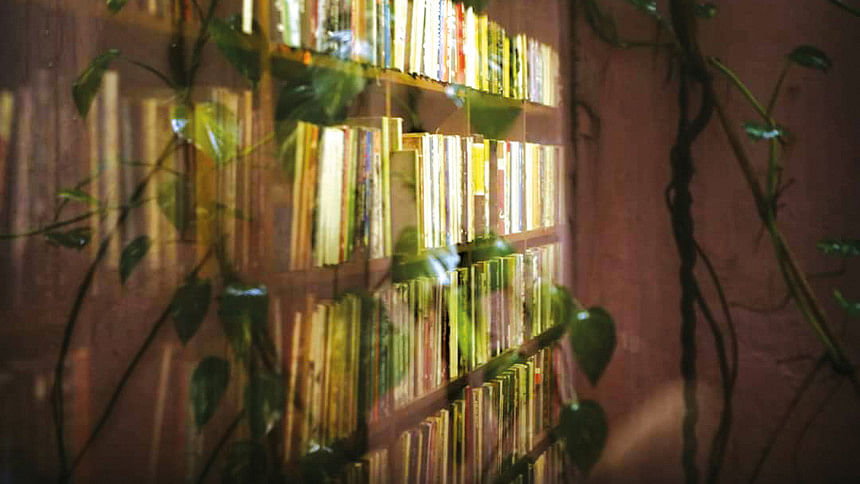
Like many people reading this, I'm fascinated with all that it entails to interact with a book. It isn't just about tucking yourself into the sentences of a text, finding warmth and companionship; nor is it about setting sail with those sentences until you start to soar, exploring alien worlds and parts of yourself, finding your ideas, your most intimate convictions alternately challenged and validated.
No, as potent as that magic is, picking up a book is also about having your eyes arrested, across a crowded row of shelves, by a cover artwork that speaks to you. It's about subconsciously appreciating the work of that artist and being won over by the premise offered by the author and her publisher. It's about smelling its pages—clean, crisp, fresh from the printers, or deliciously mouldy from decades of survival?—about carrying its (hardback, paperback, e-book, audiobook) weight in your arms and your mind. In the weeks or months to come, it's about mulling over what you like, dislike, or are on the fence about, regarding the book's content, and it's about passing on those sentiments to your surrounding community of readers, either through scribbled annotations, social media posts and published reviews, or through word of mouth. Having long loved all these parts of a book's life cycle, it fascinates me how these very identifying qualities of the book have always been so mercurial and manifold. How these shape-shifting qualities have in turn challenged the working definition of a book across cultures and histories.
Regardless of form, the most common prerequisite for a book appears to be its readability. You can't read it if it's not a book and it's not a book if you can't read it; hence the vital need for publishers, printers and distributors today, or scribes, before movable type had come along. Anne Frank's diary would have remained a diary if it hadn't been published, after all, and that would have left much of the world intellectually and emotionally poorer.
Even just with regards to the text, we're familiar with an idea articulated by Roland Barthes in "The Death of the Author". "A text's unity lies not in its origin but in its destination… The birth of the reader must be at the cost of the death of the Author," he famously wrote. This is true of most published books today, with their cloying need for promotion, sales, reviews, adaptations. Most books seek out an audience even before they're entirely a manuscript, either because the author has signed a two or three-book deal with the publisher, or because the publisher needs to decide which genre will shape their marketing strategy and cover art. Even at Daily Star Books when accepting a manuscript, we admittedly ask the author, who do you think will read this book?
The same applies, on a far grander scale, to some of the major world religions. The first word in the Quran asks one to "read". It begins with an instruction to read in the name of God and for centuries, Muslims have primarily—second to following Islam's five pillars—practiced their faith by reading, memorizing, revisiting and interpreting the teachings dictated by the book. And yet a large part of 'reading' the Quran, or any holy book, goes against the grain of what we usually mean by 'reading'—a Muslim reader isn't meant to pick and choose what one likes or dislikes in this text, or what suits one's reading preferences and beliefs. It's about accepting the texts entirely especially and even, for many non-Arab speaking Muslims today, when they don't know how to understand the language of the text.
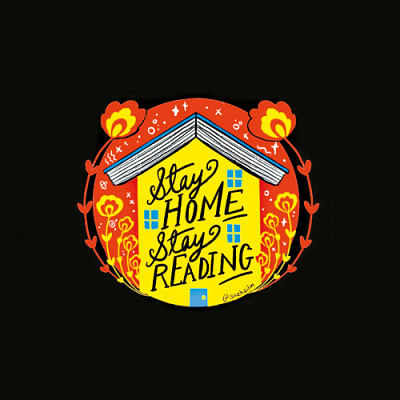
Meanwhile in Christianity, before the printing press came along, the role of the scribe had been a revered one. It involved reading and copying manuscripts so that others could read the Scripture. "Since Scripture cannot be read until it is written, it is both profitable and necessary for monasteries to train monks carefully in the art of writing. Of all manual labor nothing is more in accord with the state of monks than the zealous copying of sacred writings," wrote Johannes Trithemius, a 15th century German abbot and polymath, in De Laude Scriptorum (published as In Praise of Scribesin 1974).
Yet the same cannot be said of the famous Lotus Sutras, the earliest surviving relic of Japanese textual printing from the eighth century. Under the orders of Empress Shotoku sometime between 764 and 770 AD, just after she had successfully stopped an insurrection with the help of a Buddhist court, a Buddhist charm or prayer was copied on to roughly one million strips of thick paper, each of which were then rolled into wooden pagodas and placed in the hollow centres of the 10 leading Buddhist temples of Japan. They might have used wood blocks for the printing, but more recent research leans toward bronze or copper plates. What's significant is that these texts, part of the Hyakumanto prayer and taken from the sutra Muki Joko-kyo, were specifically not meant to be read, written in a now unreadable writing system using Chinese characters that would phonetically replicate the Sanskrit incantation. The project was implemented "on a scale rivalling that of modern best sellers," the Encyclopedia of Modern and Information Science, Volume 24 (1978), points out.
This early instance of Japanese printing might be a unique example, but it adds to the definition of a book that has been in flux over centuries. Due to its readability or lack thereof, a book can be instruction, enlightenment, protection, and information. What serves simply as popular reading or a form of memorializing a culture in its time—recording hunting expeditions in ancient China or a non-fiction volume about the world we live in today—can transform through the passage of time into a historical artefact ripe with clues for researchers. Margins that were once meant to be scribbled on become off limits to readers centuries after their genesis. As a book of yesterday becomes a rare book of today, binding that was once meant to hold a book through its being read is now meant to hold it together through its being unread. And its value around the world climbs not because it is heavily circulated, but because it's guarded, enshrined, existing in a sole specimen.
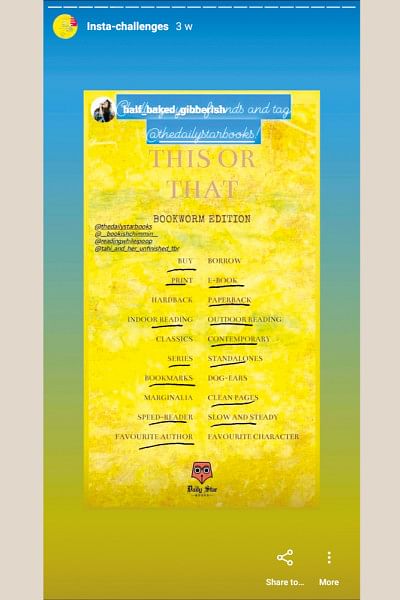
The Covid-19 disease mushroomed in China in January this year. The rest of the world started getting afflicted from February and here in Bangladesh, most of us who aren't frontline workers or daily wage earners have been forced indoors since mid-March. As food supplies dwindle and streets are left with a haunting solitude, something uplifting is happening inside many of our homes.
Just before the world stepped indoors, book sales saw a gust of an increase. According to figures provided on March 27 by NPD BookScan, which prepares and analyses publishing industry data, "year to date" book sales were up by 0.2 percent in New York, the most heavily Corona-afflicted city; the spike was matched in Boston, New Hampshire and Vermont. Study aids saw a 235 percent growth in sales and juvenile non-fiction sales grew by 66.2 percent. Sales of thrillers—a form of escapist fiction—skyrocketed by 93 percent and contemporary romance, contemporary women's fiction, horror, and romantic suspense all saw spikes in sale. Similar figures aren't available for Bangladesh, but before closing down under the government-mandated lockdown, Bookworm Bangladesh, one of our more popular bookstores that delivers in and outside Dhaka, saw a spike in home delivery orders. Readers were huddling towards specifics titles as they prepared for the lockdown, Bookworm shared. Gabriel Garcia Marquez's Love in the Time of Cholera, Dean Koontz's Eyes of Darkness, Albert Camus' The Plague. Social media has been rife with enquiries about home delivery services as bookstores started closing up, particularly after Rokomari, one of the largest of such services providers, also decided to halt operations, and reading tastes appear to be bending towards classics or feel-good contemporary fiction.
As the virus spread its tentacles and the world stepped indoors, authors, publishers and book bloggers have taken to social media platforms with renewed vigour. Daily Star Books started a virtual book club on Facebook, as did foreign publishers like Vintage Books. Pakistani writer Fatima Bhutto and journalist Sanam Maher started the 'Stay Home, Stay Reading' series on Instagram on March 27—Alexander Chee, Isabel Allende, Deepa Anappara, Nikesh Shukla, HM Naqvi, Aanchal Malhotra, Mohammad Hanif, Arif Anwar, and many other authors from around the world took part by reading aloud from their books on Instagram for free. Seagull Books of Kolkata are releasing seven new e-books on their website every Sunday free for download by all. Literary magazine Catapult are giving out free international giveaways of some chosen titles. And readers are busy devouring books. Facebook and especially Instagram are flooded by images of books being read and shelves being repacked. Book-themed bingo templates shared on Instagram stories are reflecting people's reading tastes and rituals—paperback versus audiobook, bookmarks versus dog-eared pages, fiction versus non-fiction. Book reviews and suggestions are flying across virtual book communities like Litmosphere and anecdotes and stories inspired by childhood interactions with books are being written about.
It might seem pedestrian to us because we're living it, but these activities all reflect the many different ways that we are perceiving and interacting with books in this unique period of inertia and numbed panic. Suddenly—especially if you're a dedicated reader—books have become more than one form of escape; it's the only form of escape. And because narratives are often better able to inspire empathy than reported facts, books about pandemics, warfare and human strife during this time might be an especially potent way for the fortunate among us to check the privilege that allows us to be indoors, safe and reading, and not starving on the streets. As we hold on to books for comfort during this pandemic, be it by reading one, listening to one, or even writing one, it might be worthwhile to ask ourselves what, in our definition, a book is.
Sarah Anjum Bari is In-Charge, Daily Star Books. She book blogs on Instagram through her handle @wordsinteal. Email: [email protected]
References:
Needham, Joseph. Science and Civilization in China. Cambridge University Press. 2004.
Encyclopedia of Library and Information Science, edited by Allen Kent, Harold Lancour and Jay E. Daily. New York. Marcel Decker, Inc. 1978.
Trithemius, Johannes. In Praise of Scribes. Translated by Roland Behrendt, Coronado Press, 1974.
Urton, Gary. Medrano, Manuel. "Toward the Decipherment of a Set of Mid-Colonial Khipus from the Santa Valley, Peru." Ethnohistory. January 2018.
"Set in stone: the earliest known Chinese texts carved in stone." Google Arts and Culture. https://artsandculture.google.com/exhibit/set-in-stone-the-earliest-known-chinese-texts-carved-in-stone-the-palace-museum/SwKis7nAGZ-cKw?hl=en
"Inscriptions on the Stone Drums." The Metropolitan Museum of Art. https://www.metmuseum.org/art/collection/search/39890.
Philip Durkin. "When is a book a tree?" OUP blog. https://blog.oup.com/2014/06/origin-word-book-etymology/

 For all latest news, follow The Daily Star's Google News channel.
For all latest news, follow The Daily Star's Google News channel. 



Comments